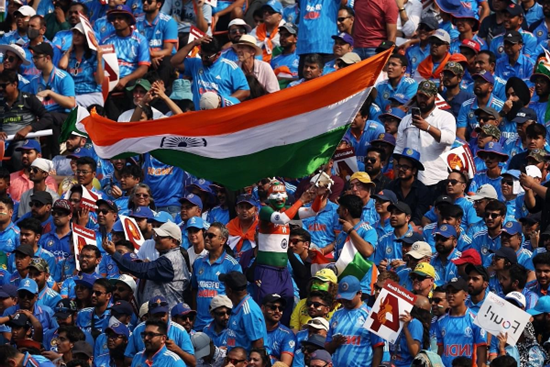The Economics of Sports
- Anubhav Saha Roy

- Feb 3, 2024
- 4 min read
Updated: May 21
The world of sports is a stage for athleticism capturing the hearts and minds of millions of people around the world. But beyond the thrill and excitement, the sports industry is a multi-billion dollar business that continues to grow rapidly. Behind the cheers of fans and the adrenaline on the field lies a web of financial transactions, economic strategies, and market dynamics that govern the existence and success of a sports team. Let's delve into the intricate web of the economics of a sports team, exploring revenue streams, financial challenges, and the broader impact on local and global economies.
The success of a sports team is generally associated with the number of wins it has on the table. However, for those working behind the scenes, the team's financial health is intricately tied to its revenue streams and expenditures, which can be diverse and multifaceted.
The primary sources of revenue include ticket sales, broadcasting rights, sponsorships, merchandise, and licensing agreements. The main expenditures encompass player contracts, coaching staff, travel and accommodation, stadium operations and marketing. Understanding and effectively managing these is critical for the financial sustainability and success of team. Balancing the budget while ensuring competitive performance on the field requires strategic financial planning-it is a fickle business.
Despite the allure of sports as a lucrative industry, the teams face significant financial challenges and risks. Fluctuations in a player's performance, injuries, changes in consumer preferences, and economic downturns can impact a team's revenue streams. The COVID-19 pandemic, for instance, highlighted the vulnerability of sports teams to external shocks, with disruptions to live events and changes in consumer behavior affecting their bottom line. Furthermore, the reliance on a few key revenue sources, such as broadcasting deals, can create vulnerability if those partnerships face challenges. While sports can be lucrative, the competitive nature of the industry also means that not all teams or leagues are financially successful. Prudent financial management, risk mitigation strategies, and adaptability are crucial for sports entities to navigate the unpredictable terrain and ensure long-term sustainability.
Fan engagement and branding are integral components of modern sports, creating a symbiotic relationship that extends beyond the playing field. Just think about how many India jerseys you see on people out and about. Successful sports franchises understand that a passionate and engaged fan base is a powerful asset. A strong and recognizable brand not only attracts sponsors and partners but also influences merchandise sales and secures a lasting place in the hearts of fans. The interplay between fan engagement and branding creates a dynamic ecosystem where the enthusiasm of supporters fuels the growth of the brand, and a compelling brand enhances the emotional connection with the fan base. In today's digital age, where social media platforms offer direct avenues for interaction, teams invest in innovative strategies to maximize fan engagement, recognizing its profound impact on the overall success and sustainability of a sports franchise.

The sports industry is a thriving economic powerhouse, generating substantial revenue on a global scale. In 2023, the global sports market was estimated to be valued at a staggering $512 billion. The globalization of sports has transformed the economics of sports teams. Leagues and teams now have a global fan base, with international broadcasting rights, merchandise sales, and strategic partnerships becoming increasingly important. This globalization has opened up new revenue streams and has also brought cultures together. Just look at this year’s IPL auction, the three highest selling players were all international stars.
Promoting competitive balance is a priority for sports leagues, as it enhances the appeal of games to fans both in person and through television broadcasts. You probably wouldn’t want to follow a league where the champion is determined by how deep the owner’s pockets are. European leagues achieve competitive balance through promotion and relegation systems, where teams move between leagues based on their performance. In contrast, most American sports leagues employ measures like salary caps.
There are two types of salary caps – a hard cap and a soft cap. A hard cap prevents teams from spending a penny more than they are allowed to, this is employed in the NFL(National Football League). The NBA (National Basketball Association) however has a soft cap, where owners are allowed to exceed the salary cap, however if they do so, they are required to pay a luxury tax. This financial constraint aims to foster parity, making it possible for smaller-market teams to remain competitive against those with larger budgets. The IPL has also adopted a hard cap system where team has a purse of 100 crore and they are not allowed to exceed it. While salary caps have been effective in promoting fair competition, they also spark debates. Critics argue that they can stifle player earnings and limit the ability of successful franchises to retain their top talent. Striking the right balance between competitiveness and financial sustainability remains a constant challenge, and leagues often adjust and fine-tune salary cap regulations to address evolving dynamics within the sports world.

When it comes to the sports leagues with the highest revenue, the IPL occupies the 13th place, generating 1.4 billion dollars per year, which is impressive considering it has far fewer matches and teams compared to other leagues that run year-round. Considering the revenue per match, the IPL is all the way up in third place, following the NFL and the Premier League.

Athletes command a large chunk of this revenue with the top 50 sports stars combining to make nearly 2.8 billion dollars last year! Athletes' salaries have become a topic of significant debate and fascination in the world of sports. Many believe that it is ludicrous that they are paid so highly as compared to other professions, questioning societal priorities that place such high value on entertainment. While others consider their salaries warranted due to the amount of revenue they generate as well as the skill and dedication required to make it to the top.

The economics of sports is a captivating field that sheds light on the intricate relationship between finance and sports. While success on the field is undoubtedly crucial, understanding and managing the intricate economic aspects are equally vital for the sustainability and prosperity of a sports team in the modern era. From competitive balance to the economic impact of athletes and coaches, the sports industry continues to evolve and expand. Whether you're a sports enthusiast, an aspiring professional, or a business leader, understanding the economics of sports provides valuable insights into this dynamic industry. Embrace the excitement, the numbers, and the endless possibilities of sports economics.
-Anubhav Saha Roy



Comments